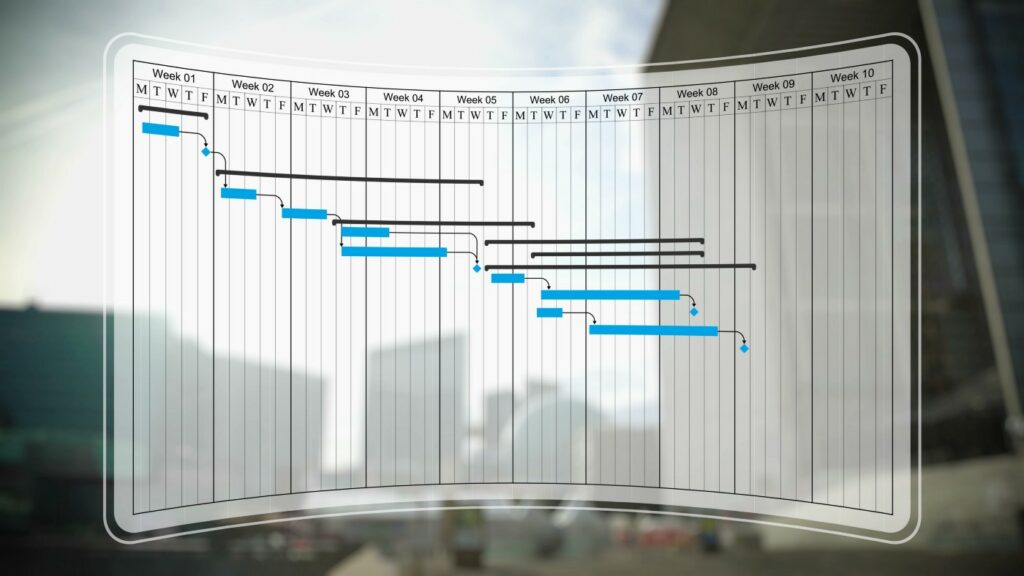As a project manager, whatever the industry, the most important question is how to shorten the project schedule. If you are familiar with the industry, maybe you can handle this kind of request very well. If you are a junior, you may not know how to start the first step to negotiate with the relavant owners and shorten the duration. I’m going to share 6 important things I’ve learned in my over 10 years of experience.
Step 1:Create An Overview

Often, project managers focus on shortening the duration but completely forget to check customers’ and project leaders’ expectations for the outcome of the project. In doing so, they miss the opportunity to get an overview or outlook of the plan and goal, all while engaging key opinion leaders in the process.
First, determine if you clearly understand the purposes, expectations, and assumptions of your project leader. At the same time, share the business strategy with team members. Discuss the goals and achievements desired with your project team to determine a rough schedule.
Step 2:Break The Overall Schedule Down To Several Steps

There are some benefits if you can break the whole schedule down into several steps. The major beneft is coordinating and communicating clearly with your project team step by step. This is also a quick way to increase stakeholder trust. They will be able to clearly see and understand the process and progression of the project.
There is a chart with demonstrated success that I highly recommend. It’s called a Gantt Chart. The Gantt Chart is very powerful because it’s a visual tool that allows all persons to quickly understand the project timeline and progression. A quick visual tool like this sharply decreases the time needed for verbal communication.
Step 3:Try Your Best To Understand Every Single Step
At this moment, you have a great understanding of the project itself and the goals. Next, we want to determine what is behind each step so we can understand its purpose more clearly.
Is it necessary to be an expert at all things to be an effective and knowledgeable leader? No. This is where you should rely heavily on communication with your team.The Project Manager must know enough to shorten the timeline without wasting energy and time becoming an expert in each step.
Step 4:Stay Ahead Of The Curve

With step 3, you consulted your team members to gain the appropriate related knowledge about the project. Through this, you have determined the duration, purpose, and function of each step. Maybe you still have some questions about your team’s knowledge and scope. Or maybe you hesitated to ask a question that may prove necessary. Over time, I have come to two reliable approaches to resolve these issues.
The first one is to do a bit of homework. Research the technical process, then discuss your questions or results with the DRI (direct responsible individual). The second approach is to question other experts to gain new insights and perspectives. Third-party KOL’s can help keep you on the edge of innovation through sharing of ideas and innovations. They can often provide a clearer picture of expectations, surprises, and shortsighted issues.
Step 5:Clear Your Concerns Before Negotiations

If you went throgh step 1 to step 4, you likely have identified alternatives for shortening the project timeline. At this moment, it’s better to involve the Project Leader or Business Leader.
Getting their opinions and recommendations and aligning your progress with the project leader is important because generally,they are more powerful than you at your company. Honestly, you really need their endorsement before going to negotiate with the related Process Owners.
Step 6:Get Everyone On The Same Page

Eventually, you should publish this schedule to everyone. Usually, there are two purposes: The first purpose is to put everyone on the same page; the second one is to escalate the schedule to top managers. This will help you leverage their authorized power to top-down assign tasks and further pull in the schedule.
I often see Project Manager directly use the escalation method to get top-down results. You won’t always be able to escalate your schedule to a top manager to get their help in pursuing a top-down assignment, so this method should be used for projects that need the extra help in tightening the deadline. Otherwise, you may find yourself in a frustrating timing position.
Key Takeaway

Depending on your awareness of the project overview and related knowledge you have, you can be the expert on the overall schedule to persuade your team members to get a better duration result. Though you may not know everything from the beginning, it isn’t difficult as long as you remember, the most important is to work very hard to understand each small part of the overall whole project schedule.
原文轉載自Matt Lo
